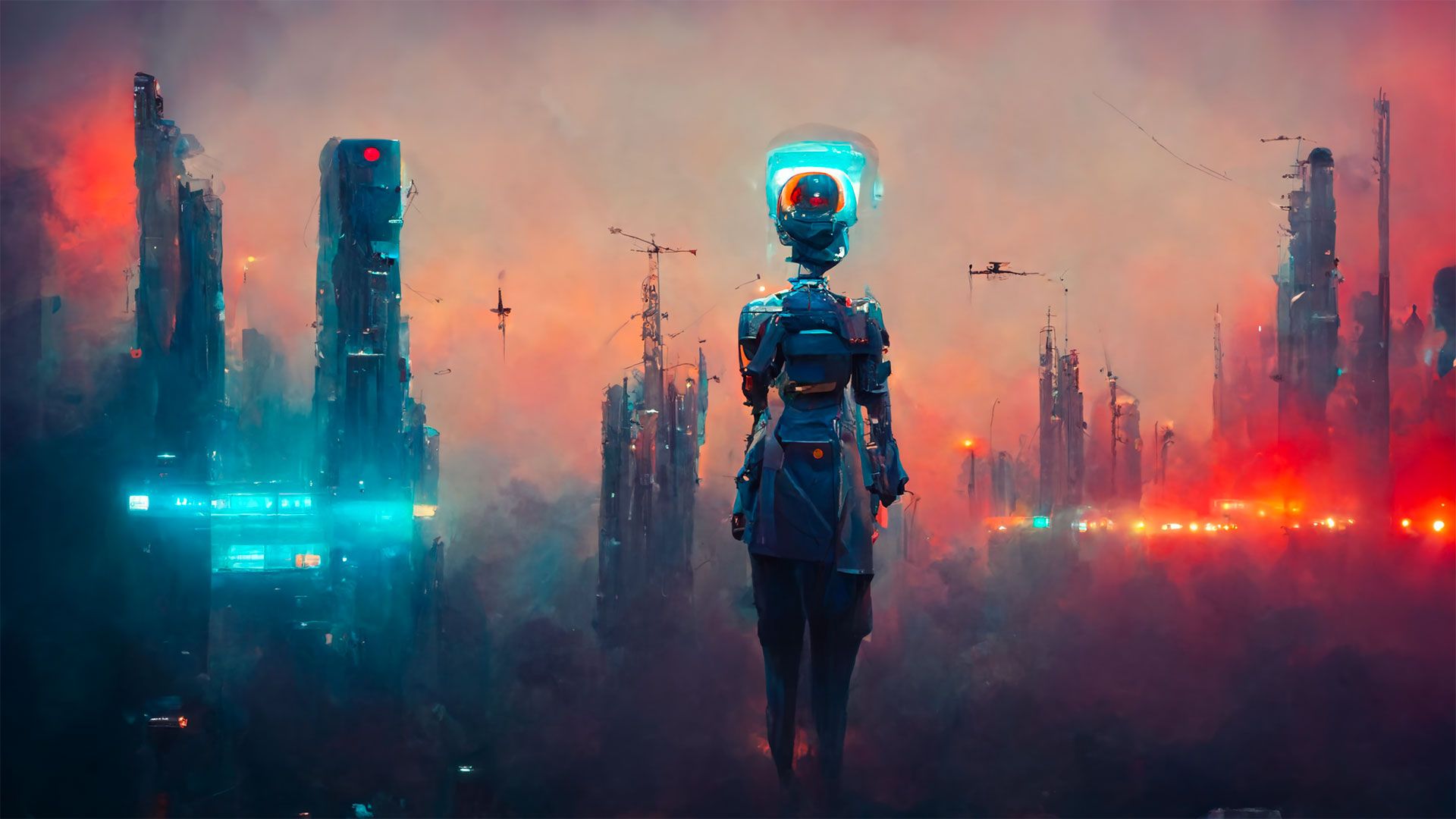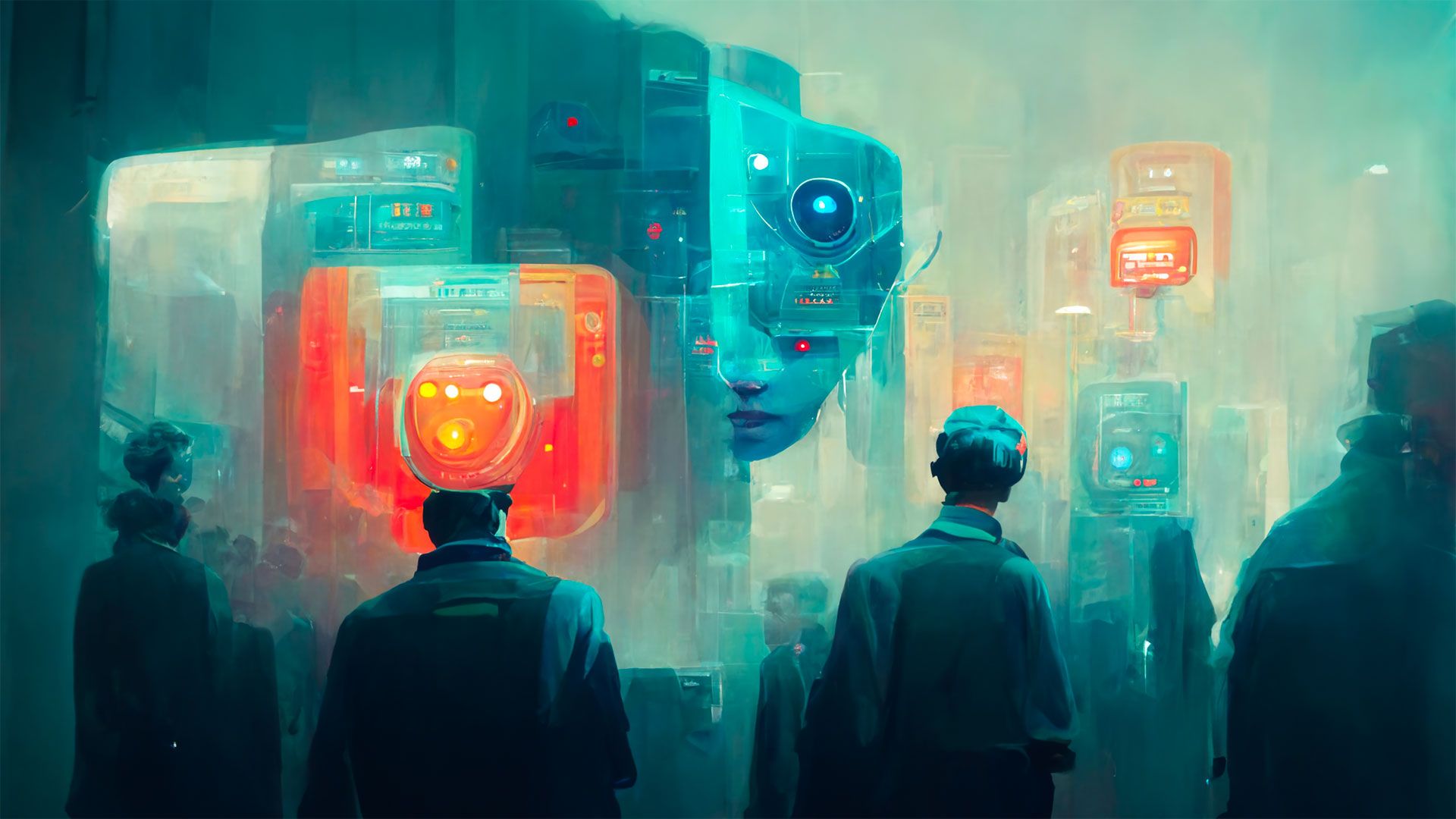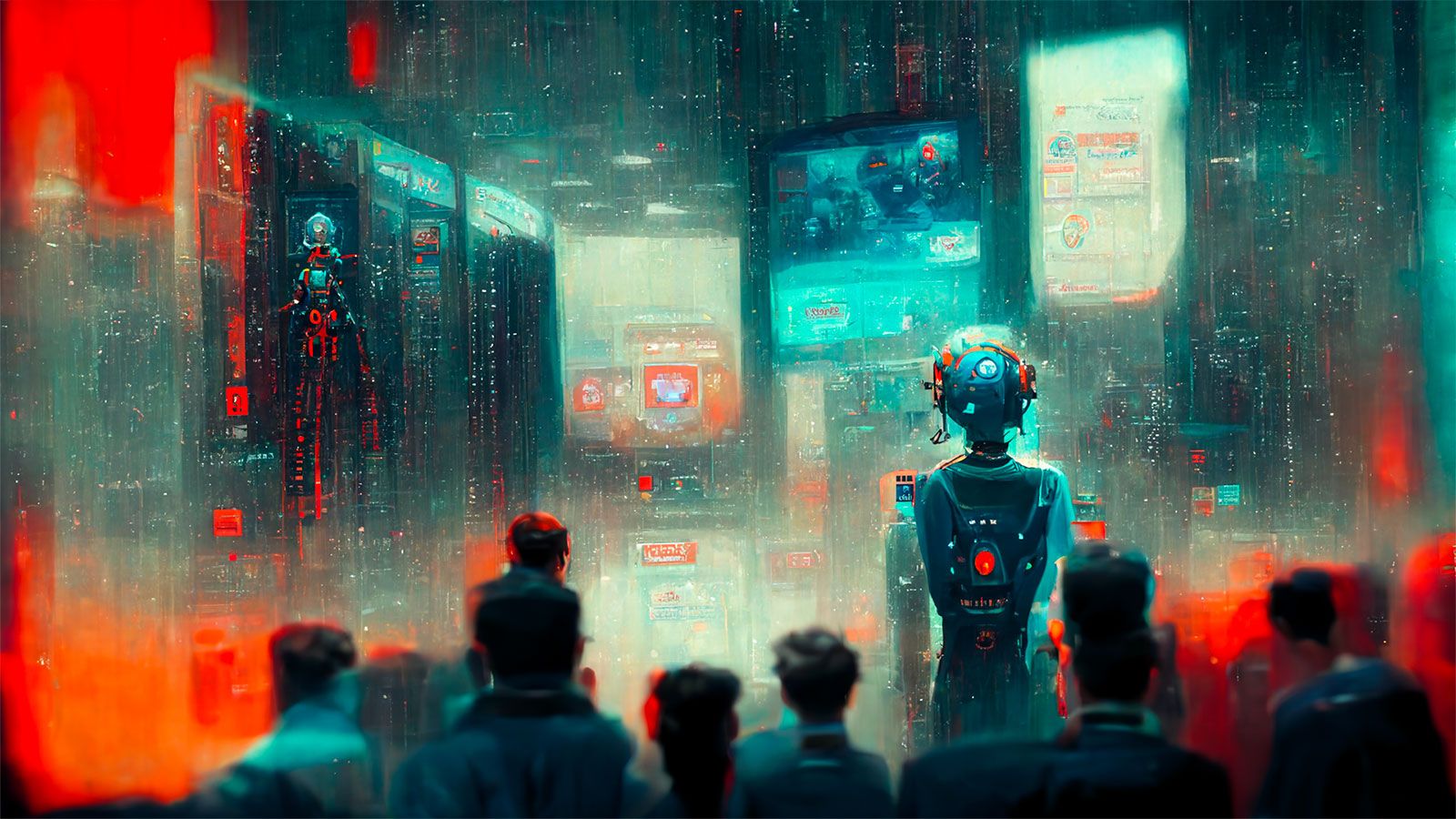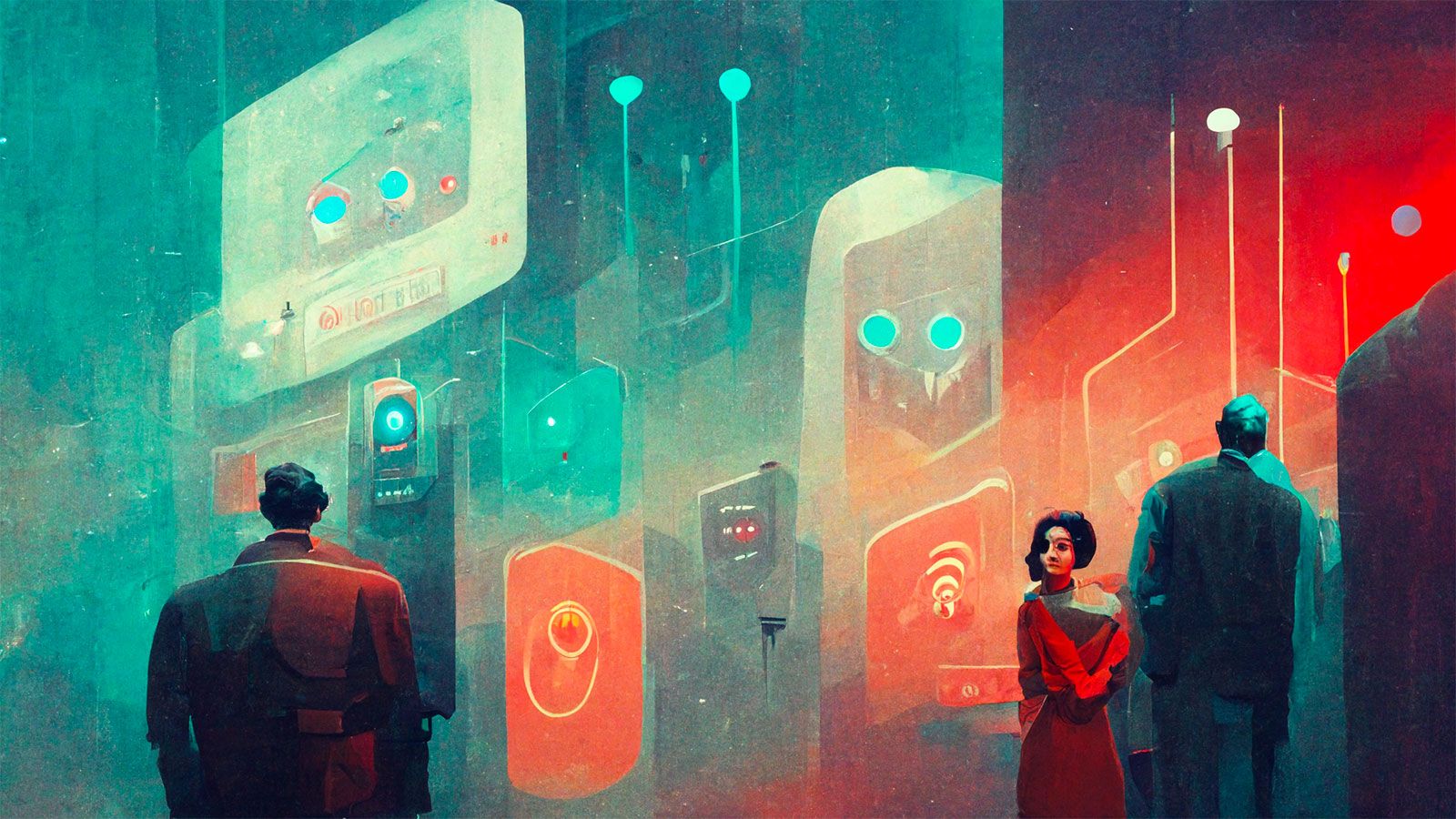AI + IoT - A Force for Disruption


A lot of us are familiar with IoT and AI. These are by far the most influential and powerful technologies of our time. But what if they are made to work together? When IoT and AI come together, they make for one indomitable team - wide-scale disruption then becomes an eventuality. In this post, we take a look at what makes AI and IoT so powerful and disruptive together.
Disruption has been one of the most notable business buzzwords of this decade - that’s probably because the term does a good job of appropriately characterising the waves that pulsed through the global economy in the wake of the technological revolution.
The early years of the previous decade saw the almighty corporation bow down to the plucky upstart, the lean, agile startup. For what it’s worth, that’s some properly legitimate disruption - the stratospheric rise of lean, well-funded, tech-oriented startups will come to define our era, in all likelihood.
With internet access becoming more and more of a commodity that we all are coming to take for granted, the startup model is likely to grow and continue merrily, causing disruption in its wake.
Today, the arsenal of technological possibilities that each one of these companies has at their disposal is simply otherworldly. Disruption 1.0, if you will, represented the triumph of the savvy, modern startups that just proved to be more competitive than the lumbering and unwieldy giants that massive corporations had become - being unable to innovate, build and deliver products as fast as their lean counterparts.
Over the last few years, though, some of the most feared corporate players of our world have reclaimed lost ground to some extent - most of them directly owning sizable slices of successful startups, having thrown themselves frantically into identifying and funding the best ones. For just a tiny blink in time, it seemed as though Goliath had found a way to keep David at bay.
This was not to last.

The IoT revolution
It is safe to say that the IoT revolution has well and truly swept through the entire edifice of modern human civilisation.
There doesn’t seem to be a single industry or sector that hasn’t been unrecognisably transformed thanks to the emergence of the Internet of Things.
The proposition that IoT technology makes has always been an irresistible one for businesses - more insights, more precision, more efficiency but lesser costs. What’s important is that, in most cases involving robust IoT infrastructure, this promise has been delivered upon.
Why has the Internet of Things had such a transformative effect on our lives? The answer is, very simply, data. IoT makes it possible for any operation to find ways to optimise at an exponential rate by collecting enormous amounts of data. And boy, has IoT come good in this regard - the data-collection equipment that the market has on offer today is frankly ludicrous - wireless sensors - sometimes even batteryless,self-powered sensors - capable of enormous feats of data collection, are being offered at unimaginably low costs.
With 5G emerging as a reliable wireless internet standard, the role of IoT in modern business has taken on further importance. With this kind of a base, it was almost inevitable that IoT-based technologies and solutions would find the kind of acceptance and adoption that they did.
IoT and AI - unstoppable together
The previous decade saw the emergence of two incredibly powerful technologies that each seemed poised to cause some large-scale disruption in the world of business and technology. Together though, they represented something unimaginably capable - the technologies we’re talking about are - IoT and AI, of course!
As we have seen several times in the past, IoT technology has been a blessing to us primarily because it allows us to split open nearly all aspects of the physical world into nearly endless streams of usable information. It has allowed us to digitise the physical reality around us, as it were, converting predefined slices of our world into 0s and 1s.
Now, AI helps us make sense of these huge troves of data that we gather using IoT sensors. AI is an indispensable part of this couplet - making for the analytics arm of the system - allowing for meaningful insights to be gleaned from the mined data.
In the early years, these technologies grew independently of one another. In the modern playing field of today, though, they work in tandem as one unstoppable agent of disruption. The phenomenal rise of cloud computing doesn’t hurt this combination either - these three technologies together are changing the way we do business.
Before we see how they work together and why they are so powerful in tandem, let’s take a deeper look at AI.

Artificial Intelligence decoded
The term artificial intelligence is by no means esoteric or unheard of - thanks to scores of sci-fi works that have tickled the imagination of many a generation, the idea doesn’t really need introduction.
The idea with AI is simple - machines - i.e computers - can process orders of magnitude more data than we can - and what’s more is that they can do it in a fraction of a second, most likely. So, why not deploy this immense information processing power to pertinent problems and find novel solutions?
In a very stripped-down sense, this is the fundamental principle behind AI. To put it more technically, artificial intelligence refers to a class of technological applications that are designed to process incredibly large amounts of information, interpret said information, unpack the information along certain pre-decided lines, and in doing so, be able to make smart real-world decisions - most importantly, artificial intelligence technologies are meant to do all this without any direct human involvement.
With the widespread proliferation of reliable and inexpensive wireless sensors, data collection was never going to be a problem - with artificial intelligence, we are actually able to make use of this data in a practical and relevant way.
Artificial intelligence can cut through vast swathes of random data-points and deliver coherent, actionable insights, making it possible for us to impose almost impossible standards of efficiency and productivity on all manner of processes.
In essence, this is why AI and IoT are proving to be so important for each other.
There are three main types of artificial intelligence in use today -
1. Rule-based artificial intelligence
Also known as simple AI, this category refers to those technologies that have strictly codified heuristics or rules that allow it to connect events to certain complementary actions. These heuristics are obviously programmed into the technology, so it might be the case that your average Joe might not identify it as a form of artificial intelligence.
However, this is the most simple form of AI, and we can see several examples of this kind of AI being used around us.
2. Machine Learning (ML)
Machine learning is a type of artificial intelligence where the software is able to learn novel patterns of behaviour rather than having denied rules, to begin with - The learning can vary from the really simple to the impossibly complex. Machine learning programs can monitor a system, tabulate large amounts of data pertaining to the conditions on which the system is contingent and use this data to identify unique connections between events and responses. It builds on this understanding cumulatively, getting more and more effective in its ability to predict outcomes and make decisions concerning the system.
These systems can identify a potential action to have desirable effects on the system, given certain conditions - and then repeat those responses when those conditions recur.
In a nutshell, machine learning systems are what we usually think of when we try to conceive of AI.
3. Neural networks
Also known as inference engines, artificial neural networks represent the cumulative pinnacle of a number of allied research fields - Designed to operate almost exactly like a sophisticated nervous system, these systems are able to make inferences about the prevailing conditions within a system at a given moment in time, and make decisions accordingly.
If you are thinking about your favourite AI-based image analysis application or writing assistant, it's probably based on neural networks. Most types of complex processing and analytics make use of neural networks these days.

Harnessing IoT and AI together
Against the backdrop that was drawn in the preceding sections, it should be rather easy to appreciate why there is so much excitement about IoT and AI being deployed together in exciting new ways.
The question that IoT developers, users, and insiders are contending with is not “do we use IoT and AI together?” but “how can we better use these technologies together?”
So, in this section, we’ll take a look at some of the most popular use cases and applications.
In the previous section, we’d seen how any system that uses software to generate responses to real-world situations constitutes at least a basic form of artificial intelligence - so, the how question, in the real world, is often answered by the nature and size of the IoT network in question.
Depending on the complexity and sophistication of the IoT network in question, AI can be integrated in very simple or rather intricate ways -
For instance, say the system is equipped with rule-based AI, it would be good for operations that involve a standing instruction for an action in response to a trigger - a trigger switch is involved and it goes something like this - “if trigger-switch is activated, turn on A”. Further down the road, as this kind of a simple system evolves into more complexity, it can handle instructions like “If trigger-switch is activated, and it’s humid outside, then turn on A”.
In this case, the AI is also having to contend with state recognition in addition to trigger switch signal recognition. Programmers might use these kinds of AIs in situations where the number of states to be recognised is few in number and the complexity involved is very little.
In most use cases, these kinds of systems make for incredible savings and efficiency. Let’s take a look at an example use-case -
Imagine you are the owner of a factory to which goods are delivered on a daily basis at varying times - using a very simple rule-based AI would allow you to hook it up so that whenever a delivery driver shows up in his truck, the system would use the trigger switch of his lorry pulling up at the gate to respond with the action of opening the date - even this rudimentary system, it’s fairly obvious to see, would make for some incredible savings in terms of the cost of operation.
Now, imagine the extent to which you stand to benefit if the system could do more than just respond to a switch-actuated command - what if the system, in addition to just identifying when a delivery vehicle has pulled up and opening the gate for him - can actually predict, when the driver is going to arrive - or maybe say, respond usefully across various other parameters? What if say, we want the AI to also turn on the light if it knows that the driver has pulled up at night?
When more complex variables need to be processed or accounted for, we’re looking at using something like an inference-engine AI or ML.
In our case, a machine learning system could monitor the arrival of several delivery vehicles to the location and over time, accumulate enough information and patterns to be able to predict when the driver is going to need light, and the system is then able to actuate that command - i.e. in addition to opening the gates as in our first example, the AI, in this case, is also able to turn on a light.
Similarly, multiple layers of complexity can be programmed into an AI system. The more an AI system is able to learn by itself, the more of an advantage it confers to the owner.

The Age of AIoT
We’re heading towards a place where IoT and Ai will no longer be distinct entities - our ability to harness data has grown exponentially - In a way, any modern IoT system, worthy of the name, is not going to be good for very much if it requires a human being to make sense of the collected data - that is simply not a feasible option considering the sheer volume of data even simple IoT systems play with these days.
What adds to the inevitability of this merger is that our IoT sensors are getting so much better, year on year.
The overall quality and functionality of our IoT sensors are growing by the day - and they are also getting more efficient. Thanks to the emergency of energy harvesting technologies like RF energy harvesting and Triboelectric energy harvesting, it looks like the wireless sensor space is going to look dramatically different in the next few years.
So, to break it down, we’re going to have sensors that are faster, cheaper, and more energy efficient - not to mention that we’re going to have a lot of them! The amount of data gathered from even the simplest of setups is going to be too much for any number of people to analyse for insights or to plan timely interventions.
Just handling the data collected by a network of IoT sensors needs a dedicated solution - AI fulfills this role. Back in the day, the data collected by a system of sensors would be displayed on a monitor to a human operator who would then have to contend with the data dn use it to make real-world decisions. This is simply not possible with the level of complexity we are dealing with today - there’s way too much data and often, decisions have to be made in a fraction of a second. Too many of these split-second reactions are involved in the working of any modern IoT system - this is why we’re witnessing the fusing together of AI and IoT.
Without the tremendous power of AI, we will simply not be able to leverage the power of our data capturing assets (DCAs).
The second disruption
Much like the first wave of disruption that well and truly ushered in the dawn of the information age, this second wave of disruption will also leave a lasting impact on the face of global business.
In the first wave of disruption that we initially looked at, businesses were forced to adapt from the outside, so to speak - with this AI+IoT powered round, the forces of disruption will remodel businesses from within.
The artificial internet of things or AIoT as its being called, will incentivise businesses to embrace big data and AI analytics like nobody’s business. The more relevant data a company has, the more it stands to gain. Period.
Evolution to Revolution
The future of our civilisation is being built right in front of our eyes. We are living in an era of culmination - the incredibly feats of technology we’re seeing around us represent the apotheosis several hundred years of inquiry and innovation.
Simple technologies giving way to more and more complex ones. Breakthrough technologies changing environments and thus, making way for more innovation and s on. The cycle of relentless technological evolution is very much a spectacle to behold. And it seems reasonably certain to assume that the evolution of today’s cutting-edge technology is going to leave the world a very different place than it is today.












